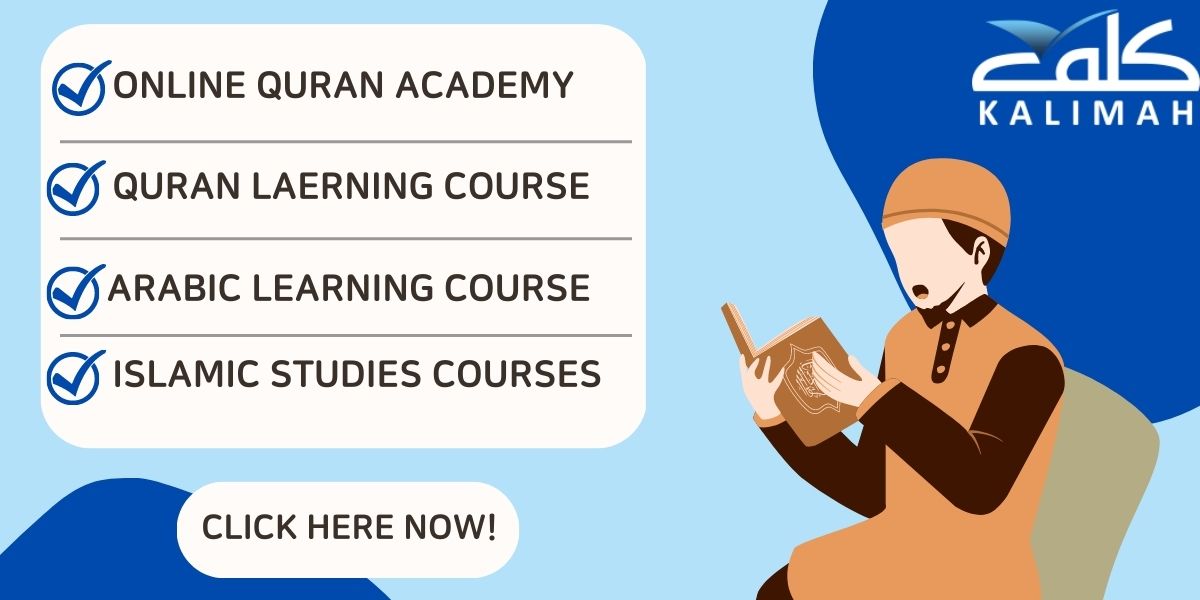In a nutshell: To learn the Arabic alphabet, focus on three key components: the letter’s name, sound, and shape. Start by memorizing the names, then practice writing by hand to learn how letters change based on their position in words. Use harakat (short vowels) to master pronunciation. Consistent practice, including connecting letters and reading simple words, will help solidify your skills. Make learning fun with games and worksheets to reinforce your progress.
When I first joined Kalimah’s team, I always thought, How can we make the Arabic learning journey easier and more enjoyable for our students? I had many conversations about this with my colleague, Ustadh Hamada, who has over 10 years of experience teaching Arabic to non-native speakers. Hamada is a specialist at Kalimah Center, particularly with adult learners, so his insights are always full of gems.
Recently, I asked him for his advice on how to best learn the Arabic alphabet, and this is how our conversation went. I hope it will help all of you who are starting your journey to learn Arabic.
How to Learn the Arabic Alphabet: Tips from Ustadh Hamada
When learning the Arabic alphabet, Ustadh Hamada advises that learners start by recognizing the following three components of each letter.
“Look, Khaled,” Hamada began, “before anything else, students need to understand that each Arabic letter has three main components: name, sound, and shape.”
So, each letter in Arabic has three key components:
- Name: The actual name of the letter.
- Sound: The sound it makes.
- Shape: How it looks in writing.
This concept, which seems simple, is key to mastering the Arabic alphabet. Every student, especially beginners, must focus on these three elements.

1. Learn The Name of Each Letter
To truly learn the Arabic alphabet, you must first memorize the names of the letters. Ustadh Hamada suggested that students write the names of the letters in big, clear handwriting.
For example, you would write “Alif,” “Ba,” “Ta,” and so on. If it’s easier, you can even write these names in your native language. For instance, “Alif” could be written as “A-L-I-F” if you’re an English speaker. This is the best way to learn Arabic alphabet in English
As Ustadh Hamada explained, “The name of the letter is important because it gives you something to hold onto. For example, the letter ‘ب’ (Baa) has a name that makes it easier to remember.”
Ustadh Hamada gave a great tip here: Write the names of the letters in large, bold letters and break them down over time. Start by learning five letters on the first day, then another five the next day. Slowly, you will have the whole alphabet memorized in no time.
2. Learn the Forms of the Arabic Alphabet
One part of learning Arabic that many beginners struggle with is understanding how the letters change their forms based on where they appear in a word.
The Arabic alphabet can seem tricky because the letters don’t always look the same in the beginning, middle, or end of a word.
So, Arabic letters can take different forms depending on where they appear in a word: at the beginning, middle, or end. For example, the letter جيم (Jeem) has three different shapes depending on its position in a word:
- ج (Jeem at the beginning)
- ــجـ (Jeem in the middle)
- ــج (Jeem at the end)
“You don’t have to learn all of these forms at once,” Ustadh Hamada said with a smile. “Break it into small chunks. Start with learning how each letter looks when it stands alone, then move to how it looks connected in the word.”
You can use Kalimah Center’s tracing paper to practice writing each letter accurately.


4. Learn How to Connect Arabic Letters
Connecting Arabic letters is a unique aspect of the Arabic script that often confuses beginners.
Ustadh Hamada broke it down for me in a way that I found really helpful. He explained that each letter connects to the next in a fluid motion, which is why it’s so important to understand the different forms a letter can take.
For example, the letter “Jeem” (ج) connects smoothly with the letter “Meem” (م), the the letter (meem) connects with the letter “Laam” (ل) to form the word “جَمَل” (Jaml), meaning “Camel”

When learning how to write the Arabic alphabet, practice connecting the letters in the order you’ve learned them. Start with simple combinations and gradually move on to more complex words. This approach will help you understand how the Arabic script flows, making reading and writing much easier.
This is the easy way to learn Arabic alphabet structure.
4. Learn the Pronunciation of Arabic Alphabet through Harakat (Short Vowels)
Next, Ustadh Hamada emphasized pronunciation. Every letter in the Arabic alphabet has a specific sound, which can change depending on what’s called the harakat.
The harakat are small marks placed on or below letters to indicate short vowel sounds. There are three main harakat: Fatha (ـَ), Kasra (ـِ), and Damma (ـُ).

*From Kalimah’s curriculum for online Arabic Course.
For example, take the letter ب (Baa). When you add the Fatha, it becomes بَ (ba), with the Kasra it becomes بِ (bi), and with the Damma it’s بُ (bu). Students should focus on mastering these sounds one by one before trying to tackle all of them at once.
This gradual approach is really the best way to learn Arabic alphabet pronunciation.
Tip: “For beginners,” Ustadh Hamada said, “it’s best to focus on the Fatha first because it’s the easiest to pronounce. Practice reading the letters with the Fatha only before moving on to the Kasra and Damma.” I found this tip extremely helpful for the students.
Kalimah’s Special Tip to Learn the Arabic Alphabet: Integrating Name, Shape, and Sound
Ustadh Hamada explained that the best way to learn the Arabic alphabet is to integrate all three components—name, shape, and sound—simultaneously.
For instance, start by learning the names of the first five letters, then move on to their shapes in different positions, and finally, practice their sounds using the Fatha. Repeat this process in small chunks until you’ve covered the entire alphabet.
As Ustadh Hamada said, “Thus, you’re not just learning letters; you’re building a foundation for understanding our beautiful language.”
How to Learn to Write the Arabic Alphabet?
At this point in our conversation, I asked Hamada what the most effective way to teach writing is. He said, “Nothing beats writing by hand, Khaled. You can’t just rely on typing on a keyboard.”
Writing by hand helps reinforce memory, improves understanding of letter shapes, and builds muscle memory, which makes the alphabet easier to recall later on. Ustadh Hamada always encourages students to practice writing the letters, their names.
To get the best results, Ustadh Hamada suggests using these tools:
- A Pen and Notebook: Write down every new letter you learn. It’s okay to use transliteration (e.g., writing فتحة as Fatha) to help you remember.
- A Good Teacher: An experienced native teachers can guide you on pronunciation and correct you when necessary.
- Manual Writing: Don’t rely solely on typing; writing by hand strengthens memory and language skills.
Reading Arabic: Putting It All Together
At the end of our chat, Hamada shared what he believes is the most crucial part of learning the alphabet: Reading.
“Reading is the heart of learning the Arabic alphabet,” he said. “Once students start reading, everything falls into place.”
Hamada suggests starting with simple words, like باب (baab – “door”) or بيت (bayt – “house”), to practice connecting letters and recognizing their sounds with harakat. This also helps students understand how to read the Arabic alphabet in context.
The Best Way to Learn the Arabic Alphabet
Learning the Arabic alphabet is a step-by-step process. Whether you’re a beginner or someone looking for the best way to learn the Arabic alphabet for adults, the method we discussed is practical and effective.
To sum up Hamada’s advice:
- Learn the names of the letters first.
- Focus on recognizing letter forms when isolated and connected.
- Practice the pronunciation with the harakat, starting with the Fatha.
- Write by hand, using charts and worksheets to reinforce your skills.
- Make it fun by using games and interactive activities.
- Finally, read as much as you can to cement what you’ve learned.
With this approach, learning the Arabic alphabet will not only be manageable but enjoyable. Take your time, practice daily, and soon you will find yourself reading and writing Arabic with ease.
Fun Ways to Learn the Arabic Alphabet: Games, Charts, and Worksheets
To keep the learning process fun, Ustadh Hamada and I both agree that you should include games and interactive activities.
Flashcards, for example, are a simple but effective way to memorize the names and shapes of letters. You can also find charts and worksheets online that help students recognize the letters in various forms and practice writing them.

Suggested worksheets: You can use these sheets to practice Arabic Alphabet handwriting. Join the dots and continue by yourself. These Arabic alphabet worksheets teach how to join the Arabic letters when they are at the beginning, middle, and end of words. The letters are written on lines to teach the positioning of letters when writing. They are free to download and print, so go ahead and use them to improve your Arabic Alphabet handwriting!
This resource is ideal for those who have moved beyond individual letter tracing and are ready to tackle the more complex task of connecting letters within words.

One activity that Ustadh Hamada shared during our conversation involves connecting letters. The teacher can give a student several letters in isolated forms, and the student has to join them together correctly. Another activity is filling in missing letters from words.
For example, if you have the word بدأ (bada – “He started”), you can remove the ب (Baa) and ask the student to write it in its correct position. These exercises help reinforce understanding of both the letter forms and their connections within words.
How Long Does It Take to Learn the Arabic Alphabet?
It takes a few weeks to learn Arabic alphabet. However, it depends and varies, but with consistent practice, a motivated learner can grasp the basics in about a month.
Of course, becoming truly comfortable with it might take longer, especially when it comes to connecting letters and perfecting pronunciation.
Learning the alphabet is just the first step. It opens the door to the rest of the language, but each student’s journey is different. Some may take longer, and that’s okay. The key is to keep practicing and not get discouraged.
Master the Arabic Alphabet with Kalimah
You’ve found the expert advice, but now it’s time to put it into practice! At Kalimah Center, we make learning the Arabic alphabet easy and fun though our expert-led course, “Learn The Whole Arabic Alphabet Online With Illustration.”
In this comprehensive course, you will:
- Master the Arabic Alphabet: Learn to read and write any Arabic word with confidence, using the essential skill of “tashkeel” (vowel marks).
- Build a Strong Foundation: Gain a solid understanding of core vocabulary and grammar, paving the way for further language acquisition.
- Communicate in Arabic: Learn to introduce yourself, ask and answer basic questions, and engage in simple conversations.
Our unique approach, based on our book “Iqraa” method, ensures that you:
- Learn at Your Own Pace: Progress through two carefully designed levels, tailored to your individual needs.
- Receive Expert Guidance: Benefit from the insights and experience of a native Arabic teacher.
- Achieve Real Results: Develop the skills you need to read, write, and speak Arabic with confidence.
Take the first step towards Arabic fluency today!
Sign up for Your FREE Class and discover how Kalimah Center can help you master the Arabic alphabet quickly and easily.
Also, we have Arabic classes just for kids. Fun and easy, so they learn fast.

Conclusion:
Learning the Arabic alphabet effectively involves understanding the three key components of each letter: its name, sound, and shape. Ustadh Hamada, with his extensive experience teaching Arabic to non-native speakers, emphasizes starting with the names of the letters and gradually learning their shapes, especially how they change depending on their position in a word. Practice writing by hand, connecting letters, and mastering pronunciation through harakat (short vowels) are crucial steps in this process.
To make learning Arabic Alphabet enjoyable, incorporating games, flashcards, and worksheets can be helpful. Ustadh Hamada advises consistent daily practice, starting with simple letter combinations and progressing to more complex words. Reading regularly is essential to reinforce what you’ve learned and build a strong foundation for further language acquisition.














